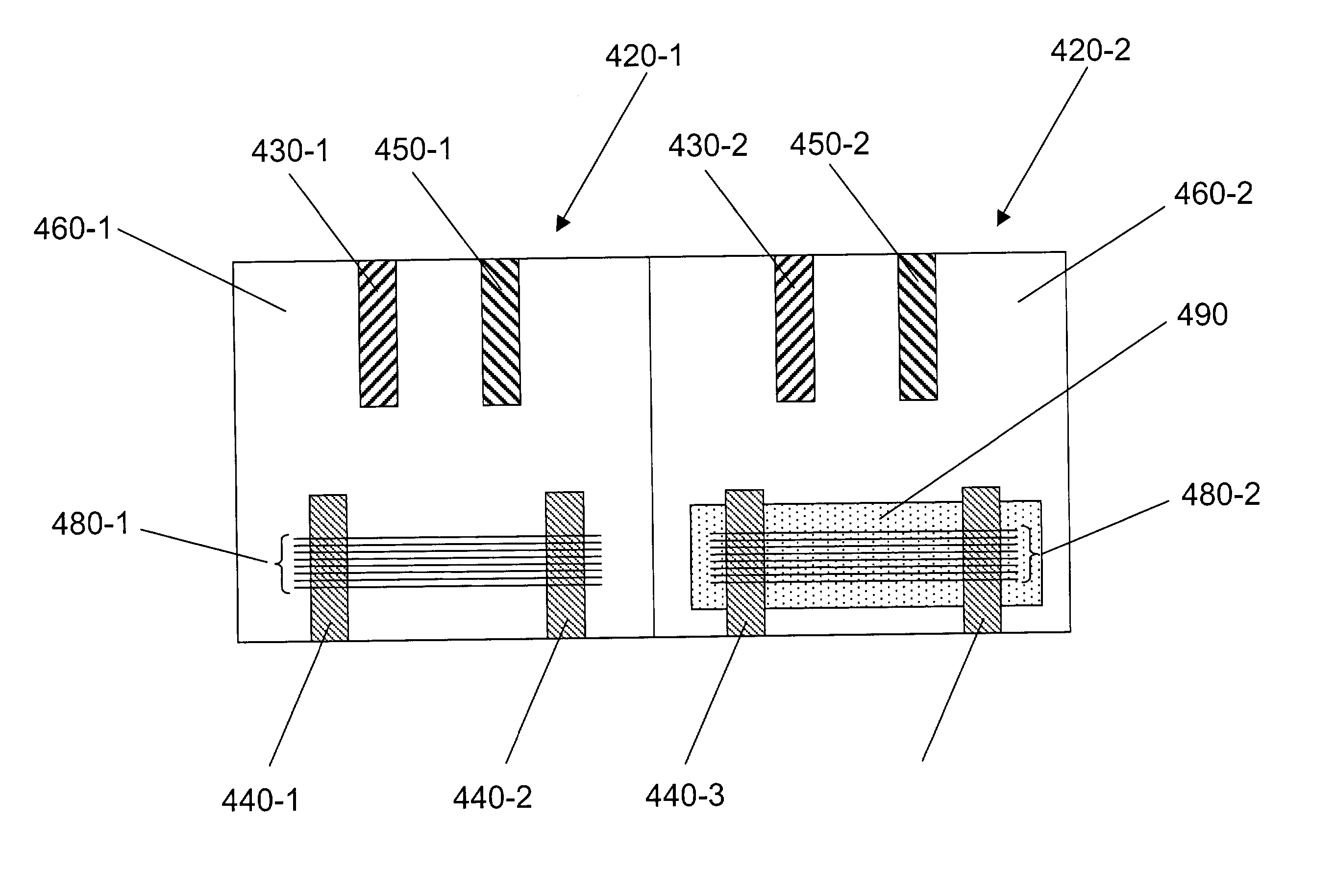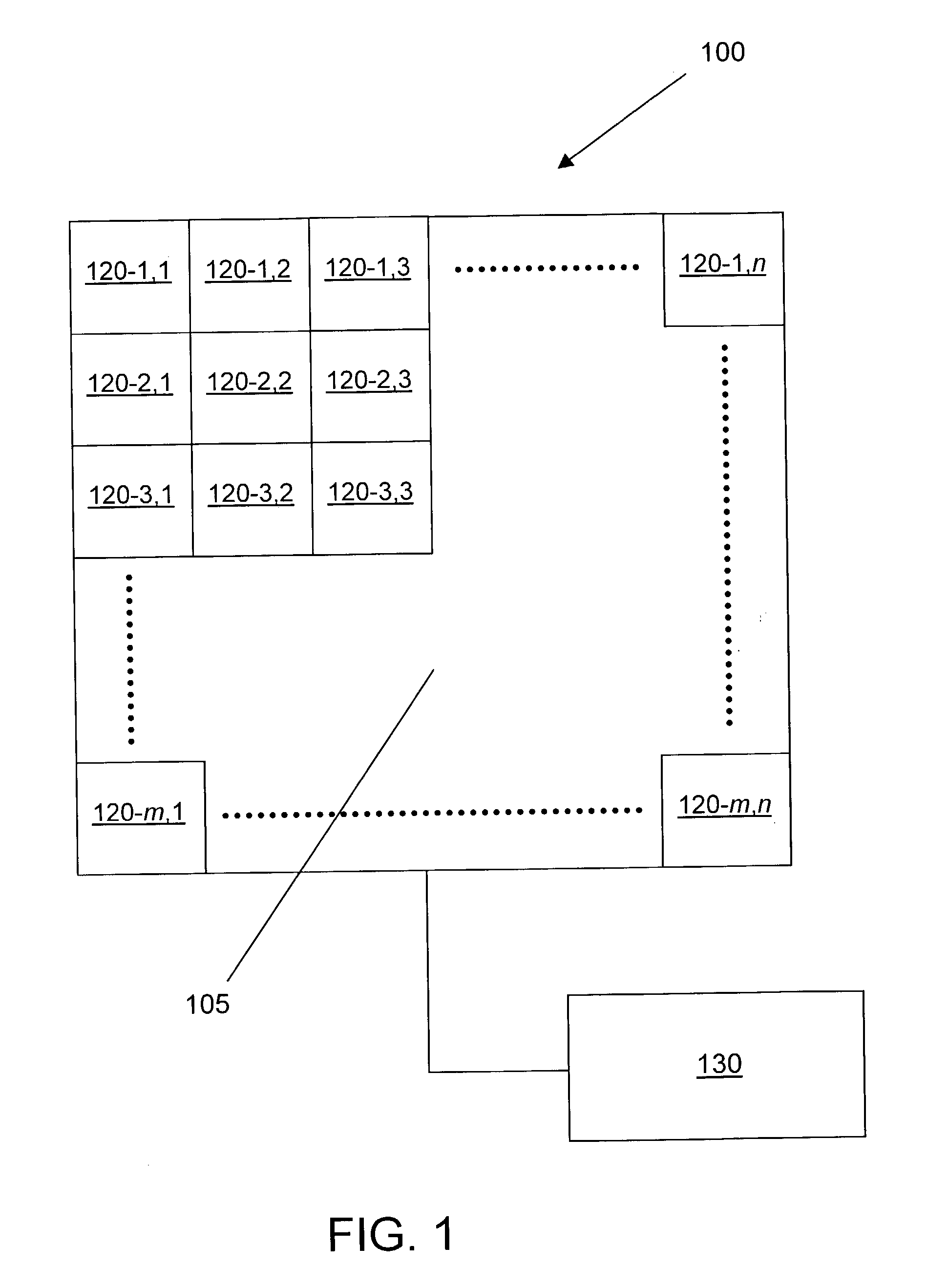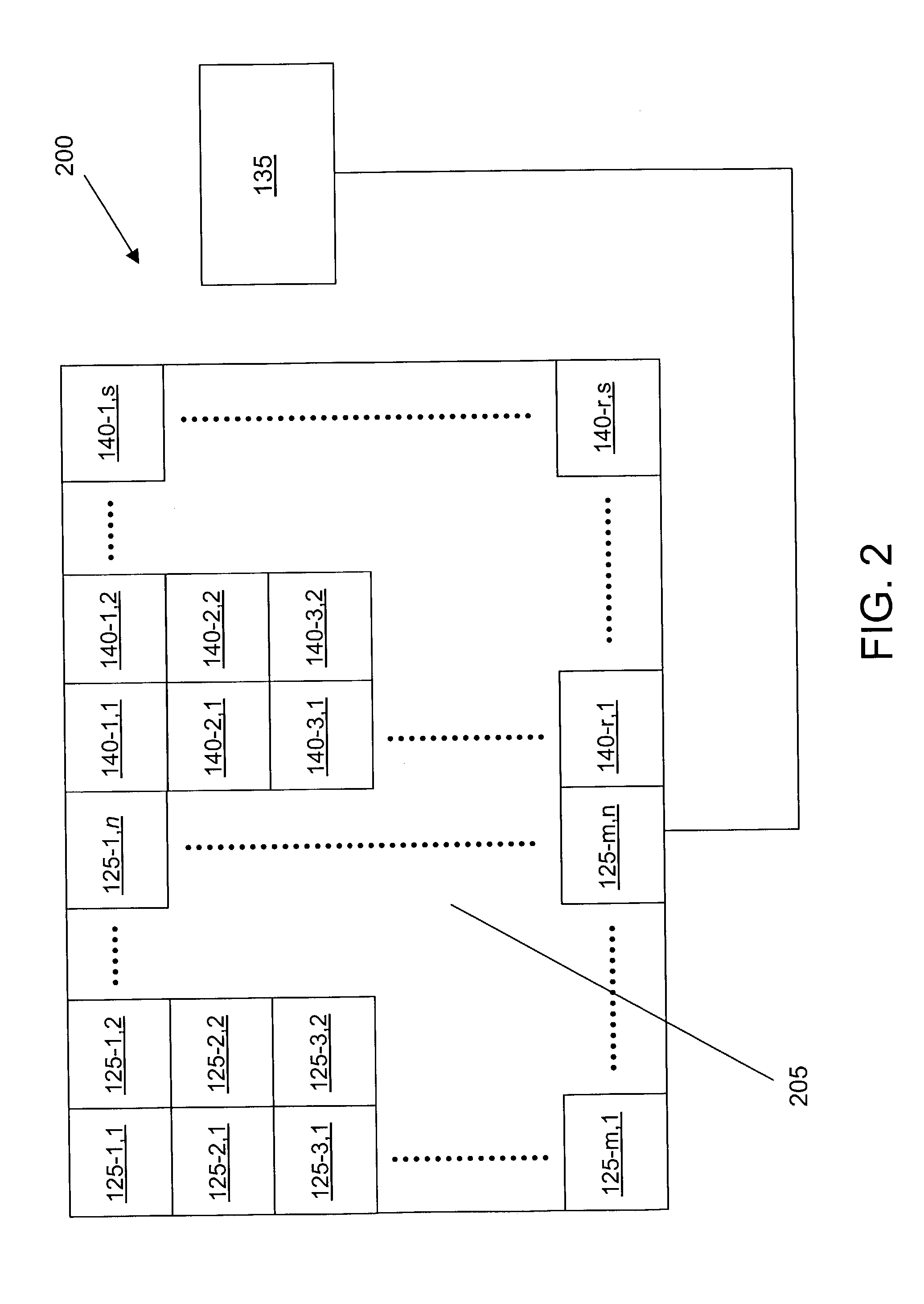Modification of selectivity for sensing for nanostructure device arrays
a nanostructure device and selectivity technology, applied in the field of system for detecting and identifying chemical species, can solve the problems of long recovery time of solid-state sensors, poor reproducibility, and limited variety of detection results
- Summary
- Abstract
- Description
- Claims
- Application Information
AI Technical Summary
Problems solved by technology
Method used
Image
Examples
Embodiment Construction
[0041] Recently, nanostructures have attracted attention as sensor components. Coating of nanotubes to make nanostructure sensing devices has been described by Zhang et al. in Chemical Physics Letters 331 (2000), p. 35 and by Zhang et al. in Applied Physics Letters 77 (2000), p. 3015. Nanostructure sensing devices show great promise for many applications. They can be made very small; even an array with a large number of nanostructure sensing devices can be made very small. They can be modified to detect a wide variety of chemical species. They use very little power. But in general, nanostructure sensing devices have been made only in small quantities for lab testing, and the techniques for producing nanostructure sensing devices have not been developed for large-scale manufacturing.
[0042] The embodiments of the present invention are illustrated in the context of using an array of nanostructure sensing devices to detect a plurality of chemical or biological species. The skilled artis...
PUM
| Property | Measurement | Unit |
|---|---|---|
| frequency | aaaaa | aaaaa |
| frequency | aaaaa | aaaaa |
| chemical | aaaaa | aaaaa |
Abstract
Description
Claims
Application Information
 Login to View More
Login to View More - R&D
- Intellectual Property
- Life Sciences
- Materials
- Tech Scout
- Unparalleled Data Quality
- Higher Quality Content
- 60% Fewer Hallucinations
Browse by: Latest US Patents, China's latest patents, Technical Efficacy Thesaurus, Application Domain, Technology Topic, Popular Technical Reports.
© 2025 PatSnap. All rights reserved.Legal|Privacy policy|Modern Slavery Act Transparency Statement|Sitemap|About US| Contact US: help@patsnap.com



